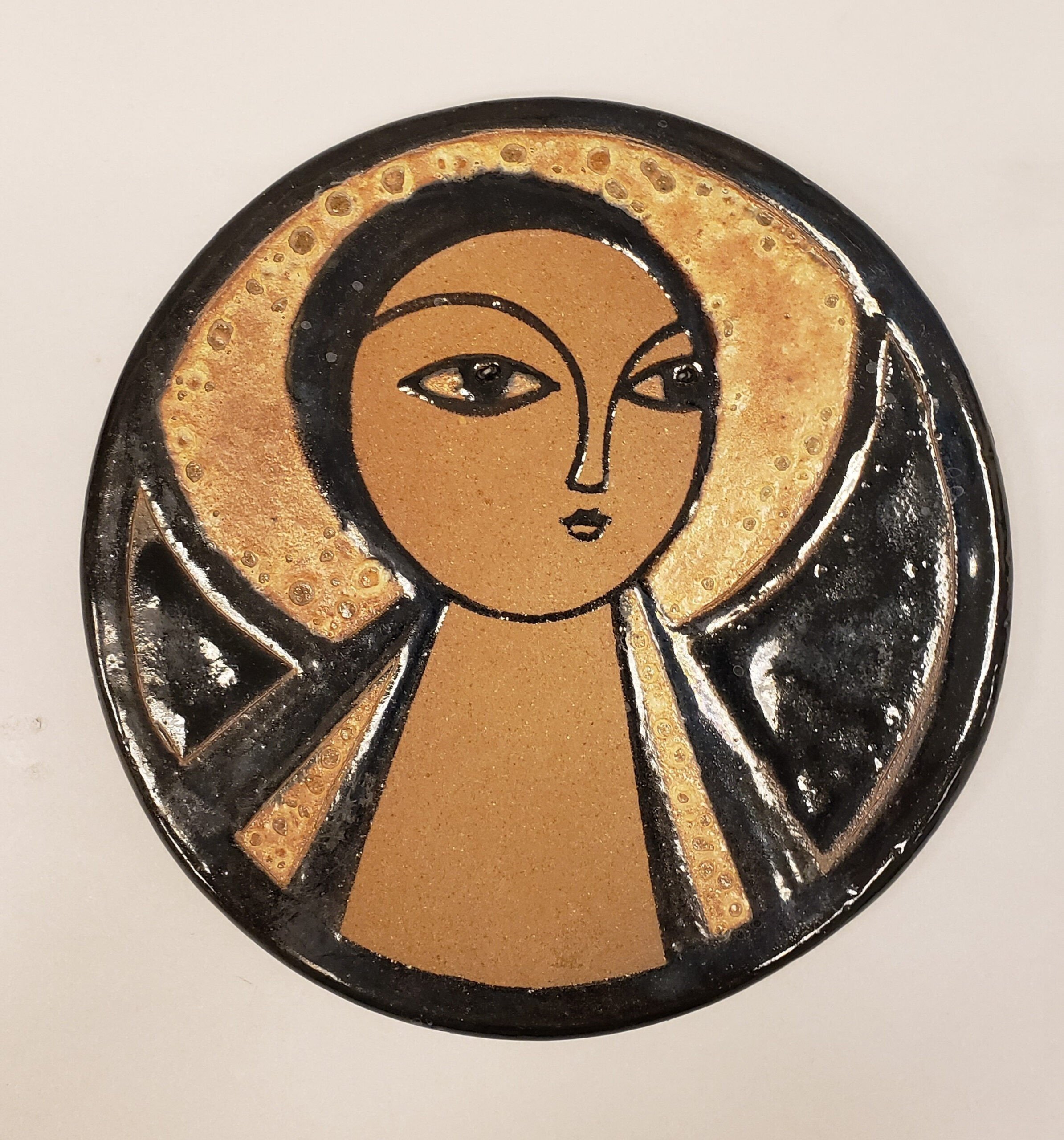
This exhibition honors the 100th anniversary of the Ukrainian National Women’s League of America (UNWLA) and the contributions of its members in the global arena of diplomacy.
Looking back on the evolution of the Ukrainian feminist tradition, the project title weaves in several historic references. Pershyi Vinok (The First Wreath) is the milestone feminist almanac that in 1887 gathered texts by women from two Ukrainian communities living under Habsburg and Czarist rule. Decades later, UNWLA president Olena Lototsky in Jersey City wrote a speech for the 1934 International Congress of Ukrainian Women in Stanyslaviv titled “The Duties of Ukrainian Women Beyond the Ocean.” Steadily evolving in its sense of cultural kinship and political responsibility, since 1925 the UNWLA has navigated waves of migration and historic disruptions, proving, in Dr. Martha Kebalo’s words, how “feminist sensibility can coexist with long-distance nationalism.”
Like the unbroken circle of a wreath, the artworks in this exhibition remind us about the important causes UNWLA members have connected around throughout the past century. The works of many of the female artists included in the show have been featured on the covers of the UNWLA’s Our Life magazine over the decades, while other artifacts come directly from the collection assembled by the organization in the 1930s that eventually became the foundation for The Ukrainian Museum in New York City. In this gallery, individual artistic expressions resonate with the collective goals championed by the UNWLA to support the Ukrainian nation through its political turmoils.
Artworks by Halyna Mazepa and Lydia Bodnar-Balahutrak emotively remind visitors about the UNWLA’s early humanitarian aid and emergency relief campaigns, including the support provided by the organization to those who suffered through hurricanes and flooding in the Carpathians in 1927. Decades of Holodomor awareness work by UNWLA members come to mind while looking at still lifes by Iryna Homotiuk-Zielyk and Chrystya Olenska.
The organization’s fight for human rights extends to its tenacious efforts to develop a transnational activist community with female dissidents and the wives of political prisoners in Ukraine during the Soviet period. In the exhibition, paintings by Olena Kulchytska, Alla Johansen, and Sophie Zarycka whisper with the voices of Olha Horyn, Oksana Meshko, Irena Senyk, Nadia Svitlychna, Nina Strokata, and Raisa Rudenko, whose correspondence can be viewed in the archival section of the exhibition.
While artists of the Ukrainian diaspora are enchanted by exotic landscapes, as seen in the canvases of Arcadia Olenska-Petryshyn, we are reminded about the international travels of UNWLA members who took part in the United Nations Decade of Women’s World Conferences as representatives of the World Federation of Ukrainian Women’s Organizations and the National Council of Women of the United States. These Ukrainian women staged demonstrations, distributed information, and conducted panels in defense of women prisoners of conscience during the UN’s World Women’s Conferences in Mexico City (1975) and Copenhagen (1980).
Artists Alina Tenser and Sasha Topolnytska represent a generation that came to the U.S. in the 1990s when the UNWLA was advising global aid agencies on Ukraine’s needs in the post-Chornobyl, post-USSR era. Their works are in dialogue with the historic children’s books illustrated by Yaroslava Surmach-Mills, which prompt stories about the UNWLA’s involvement with the International Movement of Mothers and the organization’s advocacy for vulnerable children under the United Nations Convention on the Rights of the Child (1989). Following on its Children of Chornobyl advocacy work in the 1990s, the UNWLA’s campaigns have focused on the return of the Ukrainian children kidnapped by Russia since its full-scale invasion in 2022.
UNWLA wreaths are woven from gestures of care, appeals against abuse, and lobbying for dignity. They are shared across the ocean to help people navigate, connect, and forge bonds with full respect for ethnic roots and cultural education. These traces of Ukrainian women’s activism reverberate within the artworks on the Museum’s walls.